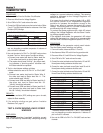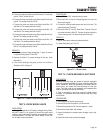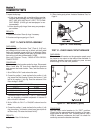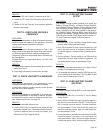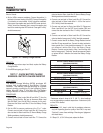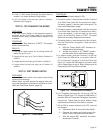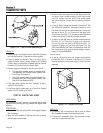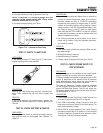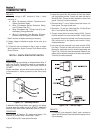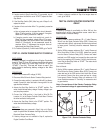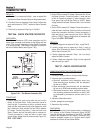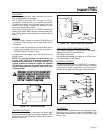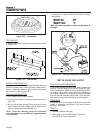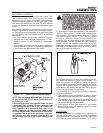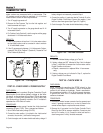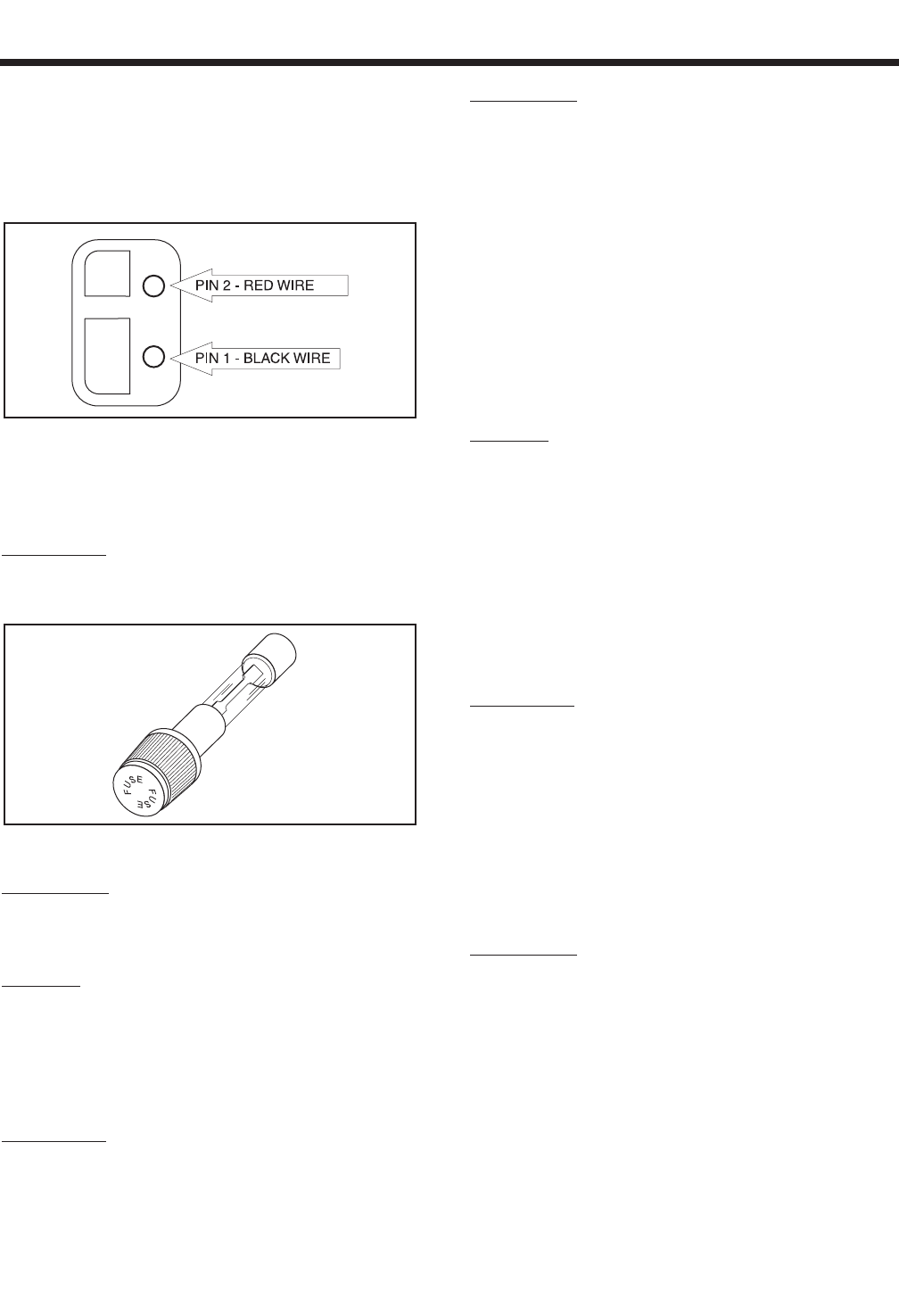
SSeeccttiioonn 77
DDIIAAGGNNOOSSTTIICC TTEESSTTSS
3. If the pump fails Step 5 or Step 6, replace the Fuel Pump.
Note: If desired, a pressure gauge can be
attached to the pumps outlet side. Pump outlet
pressure should be 2.0 to 3.5 psi.
4. If the pump operates normally, go to Test 31.
Figure 7-15. – Harness to Fuel Pump
TEST 21- CHECK 7.5 AMP FUSE
DISCUSSION:
If the panel-mounted 7.5 amp fuse (F1) has blown,
engine cranking will not be possible.
Figure 7-16. – 7.5 Amp Fuse
PROCEDURE:
Push In on fuse holder cap and turn counterclock-
wise. Then, remove the cap with fuse. Inspect the
Fuse.
RESULTS:
If the Fuse element has melted open, replace the
Fuse with an identical size fuse. If Fuse is good, go to
Test 22.
TEST 22- CHECK BATTERY & CABLES
DISCUSSION:
If the engine won't crank or cranks too slowly, the bat-
tery may be weak or discharged. See “Battery” on
Page 24.
PROCEDURE:
1. Inspect the battery cables and battery posts or terminals for
corrosion or tightness. Measure the voltage at the terminal of
the starter contactor and verify 11-12 volts DC is available to
the generator during cranking. If voltage is below 11 volts DC,
measure at the battery terminals during cranking. If battery
voltage is below 11 volts DC, recharge/replace battery. If bat-
tery voltage is above 11 volts DC, check for proper battery
cable sizing (see “BATTERY CABLES” on Page 24). If battery
or cables are still suspected, connect an alternate battery and
cables to the generator and retest.
2. Use a battery hydrometer to test the battery for (a) state of
charge and (b) condition. Follow the hydrometer manufactur-
er's instructions carefully.
RESULTS:
1. Clean battery posts and cables as necessary. Make sure bat-
tery cables are tight.
2. Recharge the battery, if necessary.
3. Replace the battery, if necessary.
4. If battery is good, but engine will not crank, go to Test 23.
TEST 23- CHECK POWER SUPPLY TO
CIRCUIT BOARD
DISCUSSION:
If battery voltage is not available to the circuit board,
engine cranking and running will not be possible.
If battery voltage is available to the board, but no DC
output is delivered to the board's Wire 56 terminal
while attempting to crank, either the circuit board is
defective or the Start-Stop Switch has failed.
This test will determine if battery voltage is available
to the Engine Controller circuit board. Test 24 will
check the Start-Stop Switch. Test 25 will check the
DC power supply to the circuit board's Wire 56 termi-
nal (Receptacle J1, Pin 1).
PROCEDURE:
1. On the Engine Controller Circuit Board, locate Terminal J3 to
which Wire 15 connects (see Figure 5-3 on Page 24).
2. Set a VOM to read battery voltage. Connect the meter test
leads across circuit board Terminal J3 and frame ground. The
meter should read battery voltage.
3. Set the VOM to measure resistance (“Rx1” scale). Connect
one meter test lead to Wire 0, Pin location J1-12 on the Engine
Controller Circuit Board. Connect the other test lead to a clean
frame ground.
“
Continuity” should be measured.
Page 49




